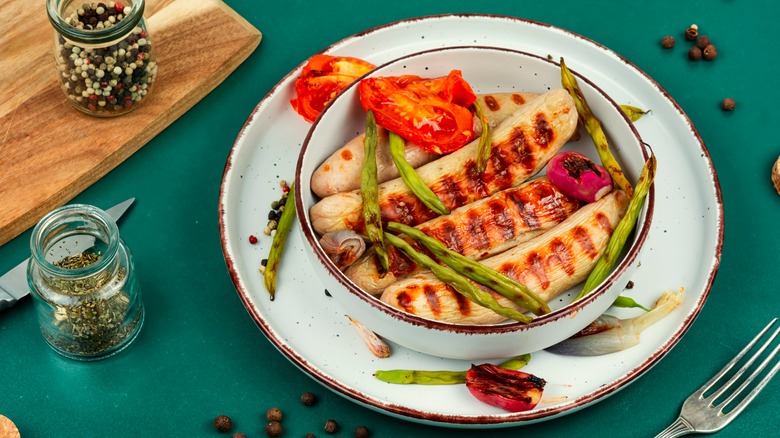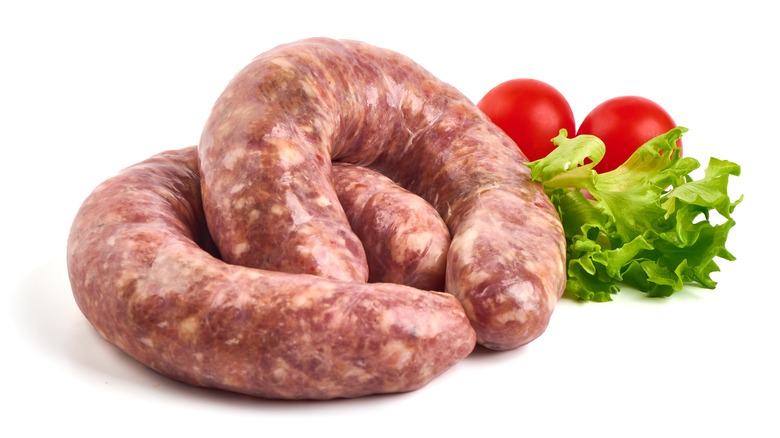Is It Better To Cook With American Or German Bratwurst? An Expert Weighs In
German sausages, particularly the iconic bratwurst, carry plenty of prestige. With centuries of bratwurst history, the well-loved sausage appears in more than 40 regional varieties tied to origin or technique. American bratwurst sausages evolved from ones brought over to the New World by German immigrants, particularly in states like Wisconsin. Eventually, American brat-making techniques shifted, using new seasonings, producing larger sausage sizes, and favoring pork instead of veal. But at their core, American and German brats still share the same family tree.
Whether classic, Kulmbacher, bierwurst, Nürnberger, and or any other tasty incarnation, one thing holds true: Brat preparation largely defines what ends up on plates and in tummies. To determine whether it's best to cook with American or German bratwurst, and to understand the nuances, Tasting Table reached out to an expert on the topic — Pete Fjosne, executive chef at Rhein Haus Seattle. Under the restaurant's sausage program, which spans three Rhein Haus locations, Fjosene oversees the creation of at least 150 to 250 pounds of house-made Bavarian sausages every single day.
Fjosne revealed a significant aspect of preparing the two types of brats, namely that German bratwursts typically arrive in your kitchen fully cooked, while American ones are sold raw. The uncooked American brats require a lot of extra work and expertise from the chef, he explained, with little — if any — payoff. In fact, cooking them at home from a raw state can affect the flavor and texture in negative ways.
The German way to prep and cook bratwurst sausage
"There are two different ways brats are made," Pete Fjosne added. "The most common ones we see here in America are sold raw – when you cook sausage from raw you are almost always going to have them split and stick to the grill when cooking, and you will also get a lot of grease dripping out that will flare up and char the sausage." He also shared that American brats tend to have more leaking grease due to the lack of binders, such as the powdered milk he employs in German-style bratwurst at Rhein Haus.
Fjosne notes that all bratwursts should be emulsified in traditional German style, which prevents leaking, splitting, and ultimately drying out. The emulsification process basically refers to the binding and blending process, being careful to get the just-right blend of meat, oil, and water. German sausages get emulsified first, then placed into cases, poached in hot water, and cooled in an ice bath. "The result is a sausage that is already fully cooked and ready to go," Fjosne said, "whether you are grilling, baking, or poaching them in beer."
If you do end up working with American-style raw sausages, you can try an at-home parboiling technique for bratwurst. Allow brats to simmer up to 15 minutes in hot water until reaching an inner temperature of 150 degrees Fahrenheit. Either way, the skins are tight and the juices sealed in, and those mouth-watering brats are ready for sizzling on the grill or stovetop skillet.

